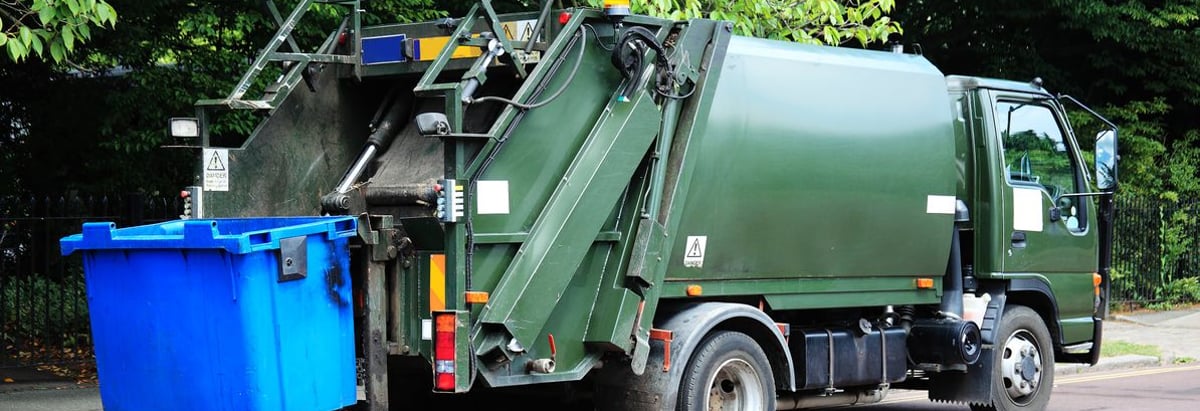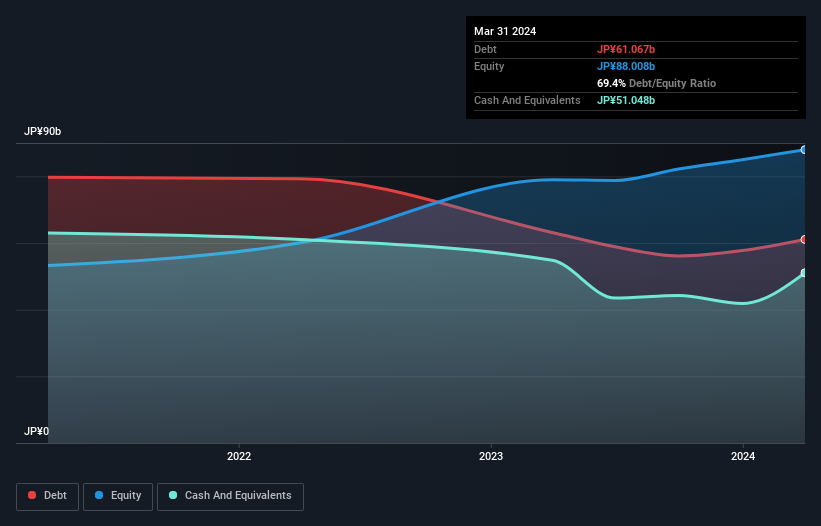- Japan
- /
- Commercial Services
- /
- TSE:9336
These 4 Measures Indicate That Daiei Kankyo (TSE:9336) Is Using Debt Reasonably Well

Warren Buffett famously said, 'Volatility is far from synonymous with risk.' It's only natural to consider a company's balance sheet when you examine how risky it is, since debt is often involved when a business collapses. Importantly, Daiei Kankyo Co., Ltd. (TSE:9336) does carry debt. But is this debt a concern to shareholders?
What Risk Does Debt Bring?
Debt and other liabilities become risky for a business when it cannot easily fulfill those obligations, either with free cash flow or by raising capital at an attractive price. In the worst case scenario, a company can go bankrupt if it cannot pay its creditors. However, a more common (but still painful) scenario is that it has to raise new equity capital at a low price, thus permanently diluting shareholders. Having said that, the most common situation is where a company manages its debt reasonably well - and to its own advantage. The first thing to do when considering how much debt a business uses is to look at its cash and debt together.
Check out our latest analysis for Daiei Kankyo
How Much Debt Does Daiei Kankyo Carry?
As you can see below, Daiei Kankyo had JP¥61.1b of debt, at March 2024, which is about the same as the year before. You can click the chart for greater detail. However, it does have JP¥51.0b in cash offsetting this, leading to net debt of about JP¥10.0b.

How Healthy Is Daiei Kankyo's Balance Sheet?
We can see from the most recent balance sheet that Daiei Kankyo had liabilities of JP¥29.6b falling due within a year, and liabilities of JP¥55.2b due beyond that. Offsetting this, it had JP¥51.0b in cash and JP¥10.9b in receivables that were due within 12 months. So its liabilities total JP¥22.8b more than the combination of its cash and short-term receivables.
Since publicly traded Daiei Kankyo shares are worth a total of JP¥272.7b, it seems unlikely that this level of liabilities would be a major threat. But there are sufficient liabilities that we would certainly recommend shareholders continue to monitor the balance sheet, going forward.
In order to size up a company's debt relative to its earnings, we calculate its net debt divided by its earnings before interest, tax, depreciation, and amortization (EBITDA) and its earnings before interest and tax (EBIT) divided by its interest expense (its interest cover). This way, we consider both the absolute quantum of the debt, as well as the interest rates paid on it.
Daiei Kankyo has a low net debt to EBITDA ratio of only 0.38. And its EBIT covers its interest expense a whopping 340 times over. So we're pretty relaxed about its super-conservative use of debt. And we also note warmly that Daiei Kankyo grew its EBIT by 19% last year, making its debt load easier to handle. When analysing debt levels, the balance sheet is the obvious place to start. But ultimately the future profitability of the business will decide if Daiei Kankyo can strengthen its balance sheet over time. So if you're focused on the future you can check out this free report showing analyst profit forecasts.
Finally, a company can only pay off debt with cold hard cash, not accounting profits. So the logical step is to look at the proportion of that EBIT that is matched by actual free cash flow. In the last three years, Daiei Kankyo's free cash flow amounted to 24% of its EBIT, less than we'd expect. That weak cash conversion makes it more difficult to handle indebtedness.
Our View
Daiei Kankyo's interest cover suggests it can handle its debt as easily as Cristiano Ronaldo could score a goal against an under 14's goalkeeper. But, on a more sombre note, we are a little concerned by its conversion of EBIT to free cash flow. When we consider the range of factors above, it looks like Daiei Kankyo is pretty sensible with its use of debt. While that brings some risk, it can also enhance returns for shareholders. Over time, share prices tend to follow earnings per share, so if you're interested in Daiei Kankyo, you may well want to click here to check an interactive graph of its earnings per share history.
Of course, if you're the type of investor who prefers buying stocks without the burden of debt, then don't hesitate to discover our exclusive list of net cash growth stocks, today.
New: Manage All Your Stock Portfolios in One Place
We've created the ultimate portfolio companion for stock investors, and it's free.
• Connect an unlimited number of Portfolios and see your total in one currency
• Be alerted to new Warning Signs or Risks via email or mobile
• Track the Fair Value of your stocks
Have feedback on this article? Concerned about the content? Get in touch with us directly. Alternatively, email editorial-team (at) simplywallst.com.
This article by Simply Wall St is general in nature. We provide commentary based on historical data and analyst forecasts only using an unbiased methodology and our articles are not intended to be financial advice. It does not constitute a recommendation to buy or sell any stock, and does not take account of your objectives, or your financial situation. We aim to bring you long-term focused analysis driven by fundamental data. Note that our analysis may not factor in the latest price-sensitive company announcements or qualitative material. Simply Wall St has no position in any stocks mentioned.
Have feedback on this article? Concerned about the content? Get in touch with us directly. Alternatively, email editorial-team@simplywallst.com
About TSE:9336
Daiei Kankyo
Engages in waste-related and valuable resource recycling businesses in Japan.
Excellent balance sheet with limited growth.
Market Insights
Community Narratives



